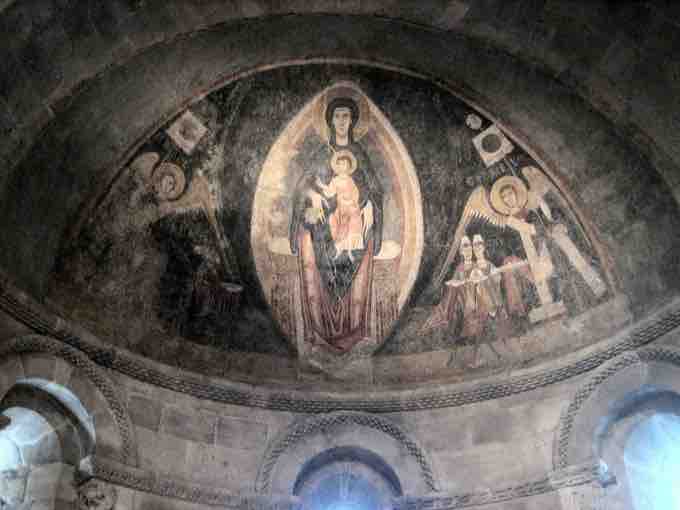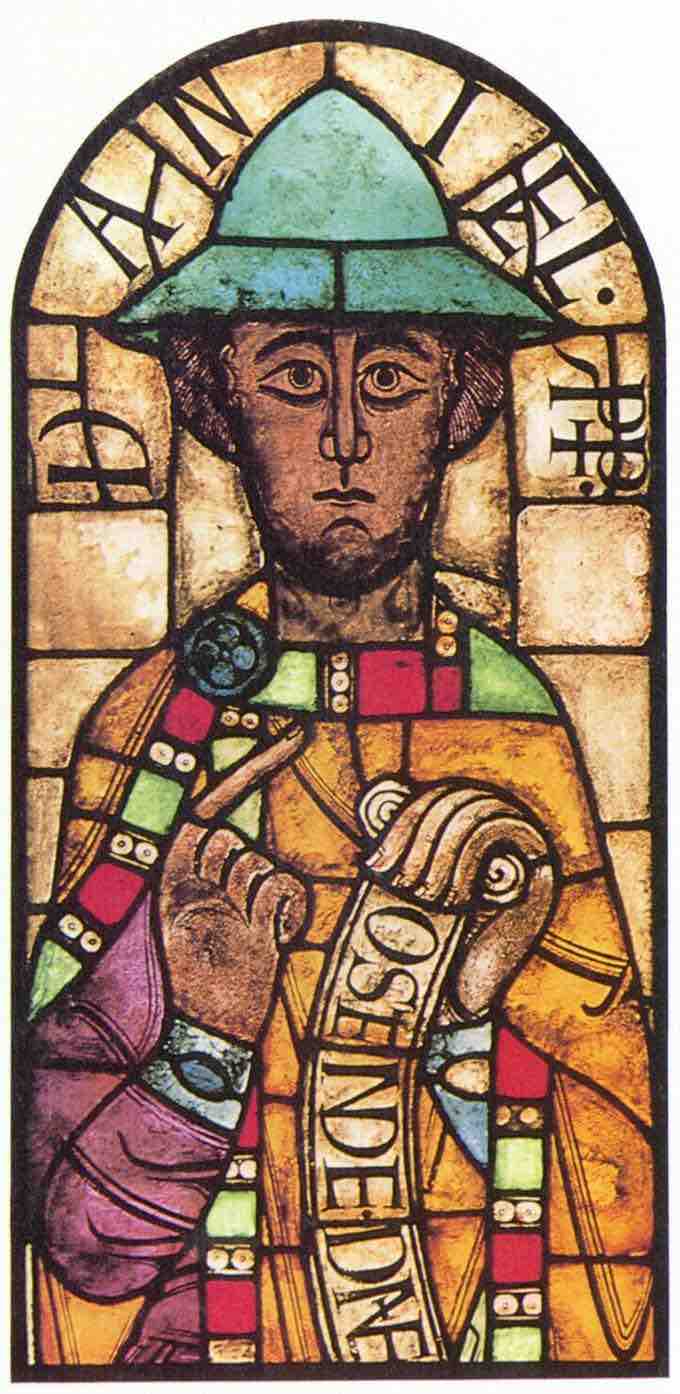Overview: Romanesque Painting
Romanesque painting and other forms of art were greatly influenced by Byzantine art, as well as by the anti-classical energy of the decoration of the Insular art of the British Isles. From these elements was forged a highly innovative and coherent style in illumination, painting, and stained glass.
Wall Paintings
The large wall surfaces and plain, curving vaults of the architecture of the Romanesque period lent themselves to elaborate wall paintings and mural decorations. Unfortunately, many of these early wall paintings have been destroyed by dampness, and in some cases the walls have been replastered and painted over. In England, France, and the Netherlands, such pictures were systematically destroyed or whitewashed in bouts of iconoclasm during the Reformation. In Denmark and elsewhere, many have since been restored. In Catalonia (Spain), there was a national campaign to save such murals in the early 20th century by removing them and transferring them to safekeeping in Barcelona, resulting in the spectacular collection at the National Art Museum of Catalonia. In other countries, such Romanesque wall paintings have suffered from war, neglect, and changing fashion.
A classic scheme for the full painted decoration of a church was derived from earlier examples, often in mosaic. At its focal point in the semi-dome of the apse, it commonly presented either Christ in Majesty or Christ the Redeemer enthroned within a mandorla and framed by the four winged beasts, symbols of the Four Evangelists. These iconographic images compared directly with examples from the gilt covers or the illuminations of Gospel Books of the period. If the Virgin Mary was the dedicatee (Patron Saint) of the church, she might replace Christ in the apse. On the apse walls below would be saints and apostles, perhaps including narrative scenes. On the sanctuary arch were figures of apostles, prophets, or the 24 "elders of the Apocalypse", looking in toward a bust of Christ or his symbol the Lamb, at the top of the arch. The north wall of the nave would often contain narrative scenes from the Old Testament, and the south wall would contain scenes from the New Testament. On the rear west wall would be a Last Judgement, with an enthroned and judging Christ at the top.

The Virgin and Child in Majesty and the Adoration of the Maji
Master of Pedret, The Virgin and Child in Majesty and the Adoration of the Magi, apse fresco, Spain, c. 1100, now The Cloisters.
One of the most intact schemes to exist is that at Saint-Savin-sur-Gartempe in France. The long barrel vault of the nave provides an excellent surface for fresco and is decorated with scenes of the Old Testament, showing the Creation, the Fall of Man, and other stories. The paintings include a lively depiction of Noah's Ark, complete with a fearsome figurehead and numerous windows through which can be seen Noah and his family on the upper deck, birds on the middle deck, and pairs of animals on the lower deck. Another scene shows with great vigor the swamping of Pharaoh's army by the Red Sea. The scheme extends to other parts of the church, with the martyrdom of the local saints shown in the crypt and the Apocalypse shown in the narthex. The range of colors employed is limited to light blue-green, yellow ochre, reddish brown, and black. Similar paintings exist in Serbia, Spain, Germany, Italy, and elsewhere in France.
San Isidoro at León, Spain
The painted crypt of San Isidoro at León, Spain
Stained Glass
The oldest-known fragments of medieval pictorial stained glass appear to date from the 10th century. The earliest intact figures include five prophet windows at Augsburg, dating from the late 11th century. The figures, though stiff and formalized, demonstrate considerable proficiency in design, both pictorially and in the functional use of the glass, indicating that their maker was well-accustomed to the medium.
Glass craftsmen were slower than architects to change their style, and much glasswork from the first part of the 13th century can be considered as essentially Romanesque. Large figures from the Strasbourg Cathedral, created in about 1200, are of especially fine quality. Some of these have now been removed to museums for protection and better viewing. Other exceptional stained glass examples can be found at Saint Kunibert's Church in Cologne, made around 1220. Most of the magnificent stained glass of France, including the famous "Tree of Jesse" window of Chartres Cathedral, date from the 13th century. Glass was both expensive and fairly adaptable, in that it could be added to or re-arranged, and it seems to have been often re-used when churches were rebuilt in the Gothic style.

Romanesque Stained Glass
Stained glass, the Prophet Daniel from Augsburg Cathedral, late 11th century.